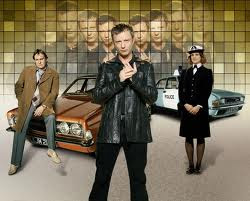The brief:
Video
Preliminary exercise: Continuity task involving filming and editing a character opening a door, crossing a room and sitting down in a chair opposite another character, with whom she/he then exchanges a couple of lines of dialogue. This task should demonstrate match on action, shot/reverse shot and the 180-degree rule.
Main task: the titles and opening of a new fiction film, to last a maximum of two minutes.
All video and audio material must be original, produced by the candidate(s), with the exception of music or audio effects from a copyright-free source. Both preliminary and main tasks may be done individually or as a group. Maximum four members to a group.
Full Specifciation: http://www.ocr.org.uk/images/81037-specification.pdf
Preliminary exercise: Continuity task involving filming and editing a character opening a door, crossing a room and sitting down in a chair opposite another character, with whom she/he then exchanges a couple of lines of dialogue. This task should demonstrate match on action, shot/reverse shot and the 180-degree rule.
Main task: the titles and opening of a new fiction film, to last a maximum of two minutes.
All video and audio material must be original, produced by the candidate(s), with the exception of music or audio effects from a copyright-free source. Both preliminary and main tasks may be done individually or as a group. Maximum four members to a group.
Full Specifciation: http://www.ocr.org.uk/images/81037-specification.pdf
There are 20 marks available for research and planning your project. The tasks detailed below will help you maximise your marks for this area:
1.You will give a detailed analysis of the codes and conventions of the chosen genre you have picked (this MUST NOT be a copy and paste exercise).
2. I would suggest that you would then choose a minimum of FIVE films to analyse in terms of titles, music, shot types, mise en scene and whether this film follows or challenges the codes and conventions for this genre.
3. Look at the target audience for the film and how each film attracted their target audience.
3. What type of company distributes your chosen films?
4. How have social groups been represented in these films and how does this relate to the target audience?
5. What are audience expectations for these films?
6. Try and present your findings in an interesting digital format (video-log, Glogster, Prezi, Wordle, Soundcloud, Slideshare, Blogger, Charts, Graphs, Questionnaires etc).





